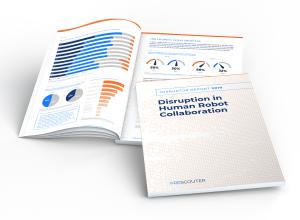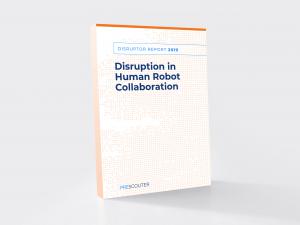Disruption in Human Robot Collaboration
How will human directors and teams of robots interact to achieve the next generation of productivity growth?
CHICAGO, ILLINOIS, USA, August 13, 2019 /EINPresswire.com/ -- PreScouter, a Chicago-based research intelligence company, has released a detailed report on the recent advances in robotics and how these advances will be disrupting the workforce, promoting improved collaboration between man and machine. With the global robotics market to exceed $150 billion USD by 2025 and the industrial robot sector to amount for nearly $13 billion USD of that in North America alone, PreScouter sees this report as being a valuable resource for any company looking to understand and potentially adopt newly emerging robotic technologies.
Dr. Ryan LaRanger, the author of the report, notes that development in robotics is focused on broadening the applications of robots, thereby meeting the challenges of stock keeping unit (SKU) proliferation and labor shortages. Disruptive advances in robotics covers a broad set of fields, from the design of novel sensors to the engineering of soft robots and direct human-machine interfacing. “Robotics synthesizes advances in a huge array of disciplines and turns them into an impactful final product. Looking at the entire innovation space is necessary to paint a picture of where the field is moving,” adds Dr. LaRanger.
The report first highlights the market forces driving the need for advances in robotics such as the looming labor shortage and the dramatic proliferation of SKUs with the advent of online shopping. It then highlights advances in robotic sensors and how they may influence the design of robots moving forward, in addition to which industries may be impacted by robots as they gain more operational flexibility. The final section covers human-machine interfaces for the control of robots, including body-machine interfaces and augmented reality–mediated control of drone swarms. The report includes an exclusive interview with the CEO of Soft Robotics, Carl Vause, who speaks about how the field of robotics will develop and what forces may drive that progression. As Vause sees it, “The next major advancement in robotics is going to be overcoming the variation barrier.”
PreScouter presents this report to serve as a robust primer, highlighting potentially disruptive advances in the field of human-robot collaboration. The report comes as the second chapter of a series of “disruptor” reports PreScouter will be releasing successively.
Mariam Jomha
PreScouter, Inc.
+1 872-222-9225
email us here
Legal Disclaimer:
EIN Presswire provides this news content "as is" without warranty of any kind. We do not accept any responsibility or liability for the accuracy, content, images, videos, licenses, completeness, legality, or reliability of the information contained in this article. If you have any complaints or copyright issues related to this article, kindly contact the author above.



